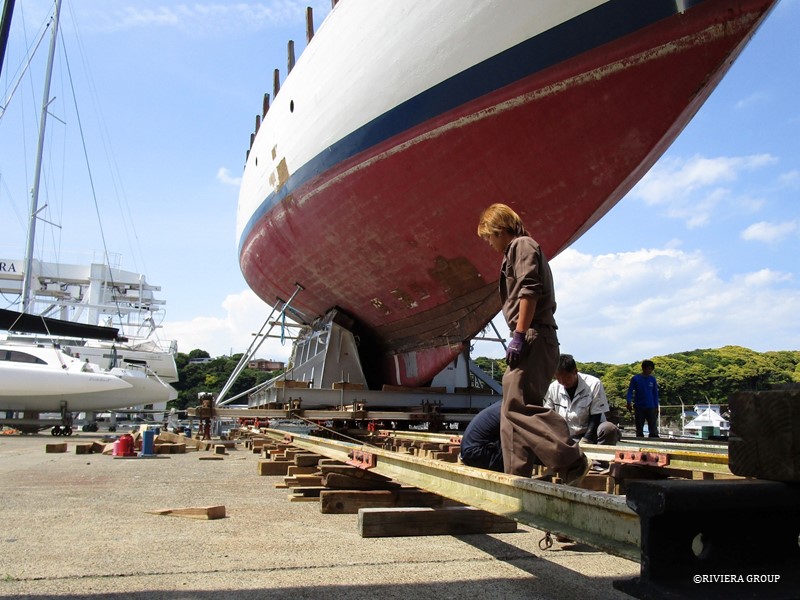June, 2017
This month Cynara was moved into the purpose-built shed for her restoration. She was jacked up on a cradle and railway tracks were built (above) that ran from her location approximately 90 meters across the marina into the shed. It took about one week to prepare the tracks, as there were a number of issues. The cradle had to be lengthened and strengthened. There was almost a one-meter drop between her location and the floor of the shed, so the tracks had to be laid level to prevent the boat from running away downhill.
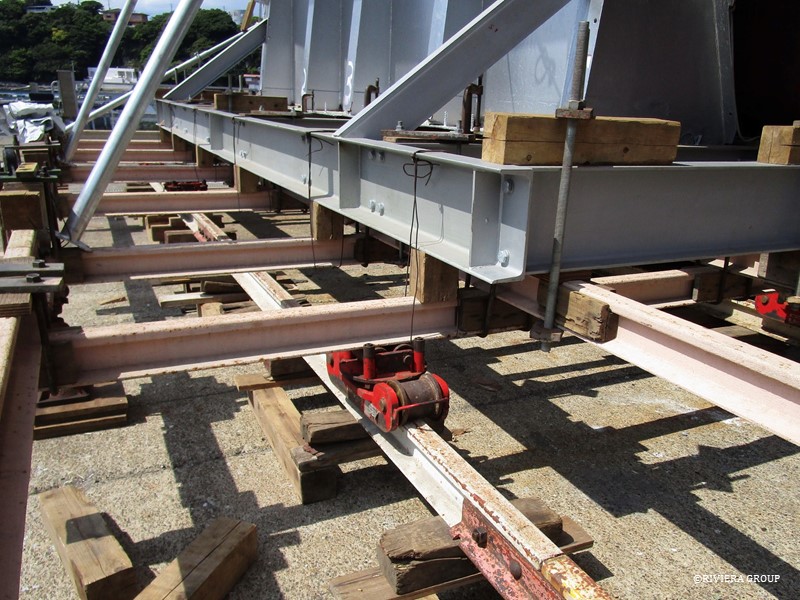
The cradle was placed on bogies that rolled along the rails, and pulled by tifor winches (or come-alongs) on her trip to the shed. Including the time spent on relaying the rails to negotiate a dog-leg in the route, which was needed to get Cynara centered in the shed, it took over a week to make the journey.
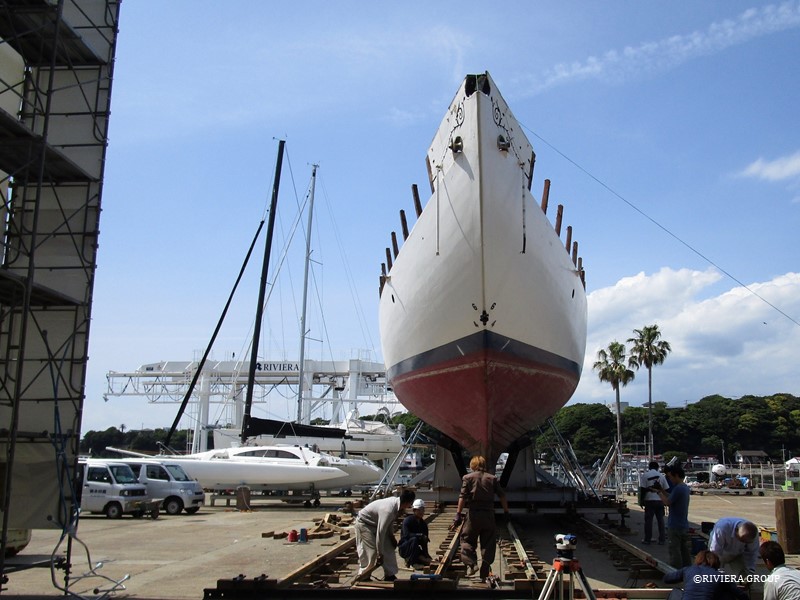

Once inside, the first job was to set her down so that she was level, to plumb the boat and get the hull safely shored. The moving cradle was left in place for the moment, and paint removal started up again.
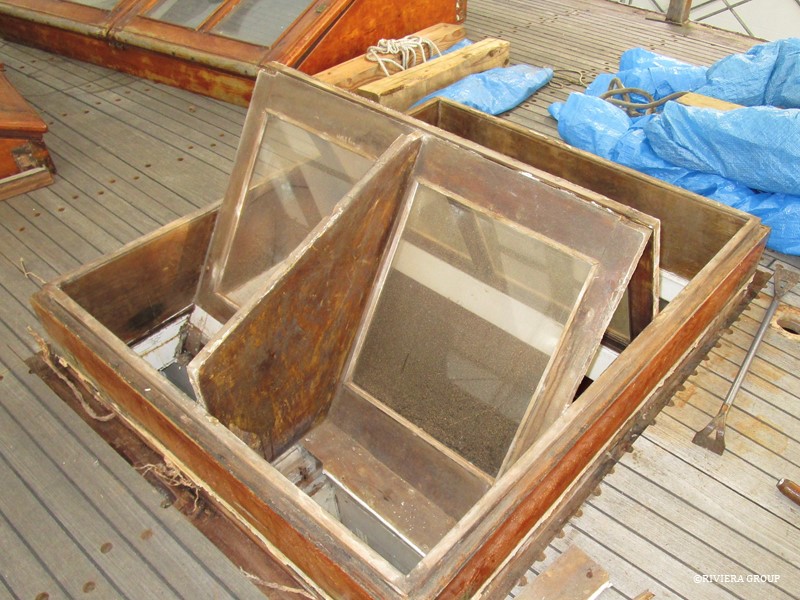
The passageway hatch in the middle of being dismantled. This ingenuous arrangement allows light into the passageway below and air into the cabins on either side. The hatch will be restored, although the stained-pine partition in the center will be remade in teak.
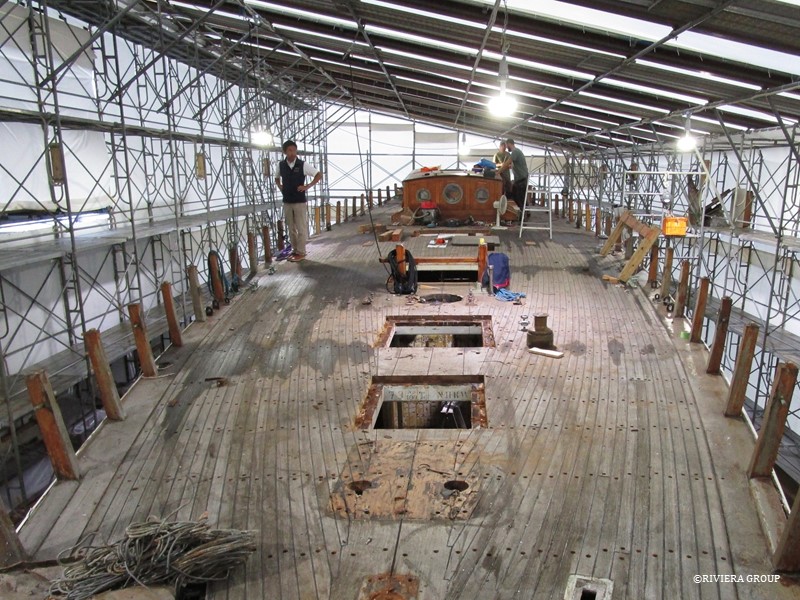
All of the hatches were removed after Cynara was inside the tent and there were no longer worries about rain entering the interior (though there were some minor leaking issues as first, as can be seen from the wet patches on the deck).
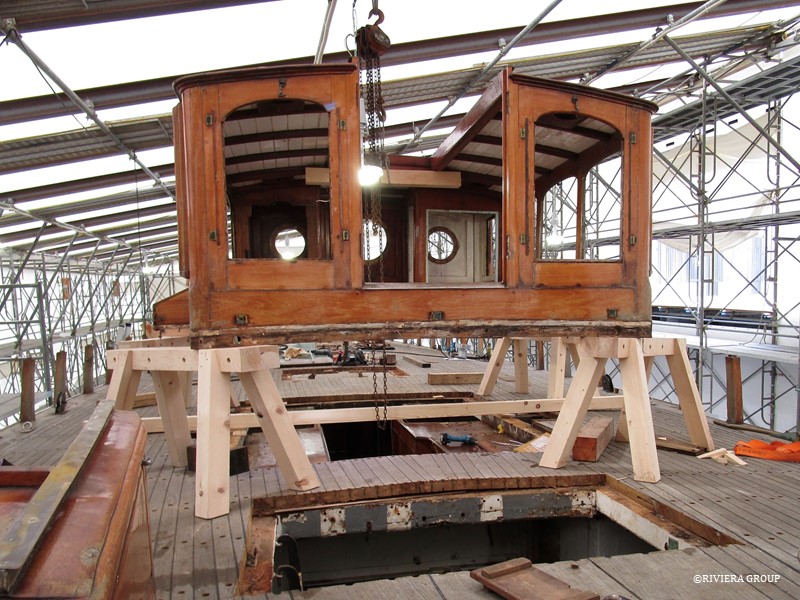
The deckhouse was the last to go. Instead of being dismantled in place, it was lifted whole from its location using chain blocks and tackles. All three of the shipwrights on hand, plus rigger Chuck—who happened to be around—got involved to ensure a safe journey from deck to the floor.
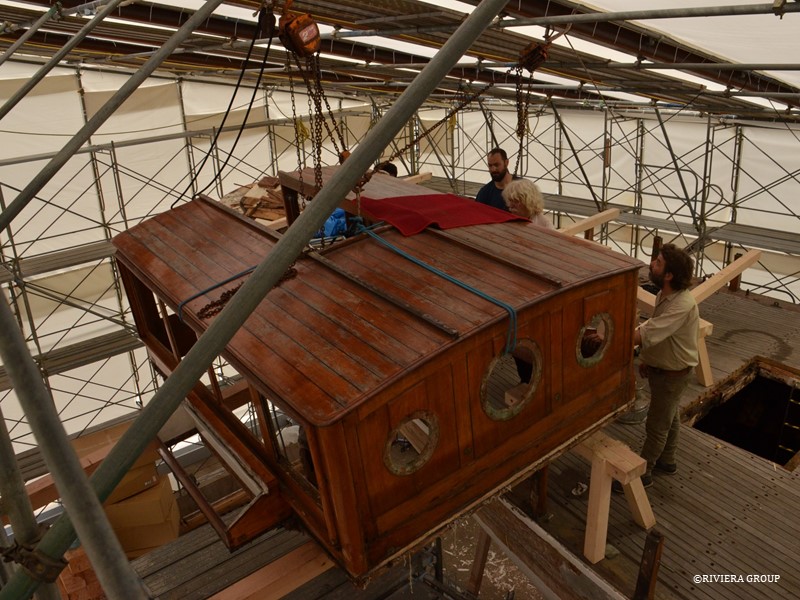
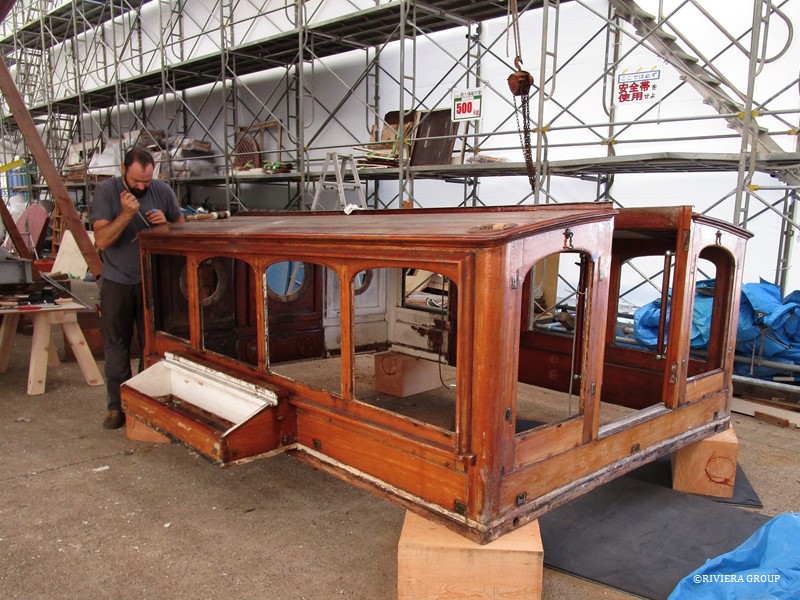
Nico Calderoni, an Italian shipwright who had recently joined the team from his base in Mallorca, removes some of the extraneous fittings from the deckhouse before it is moved to the joinery tent.
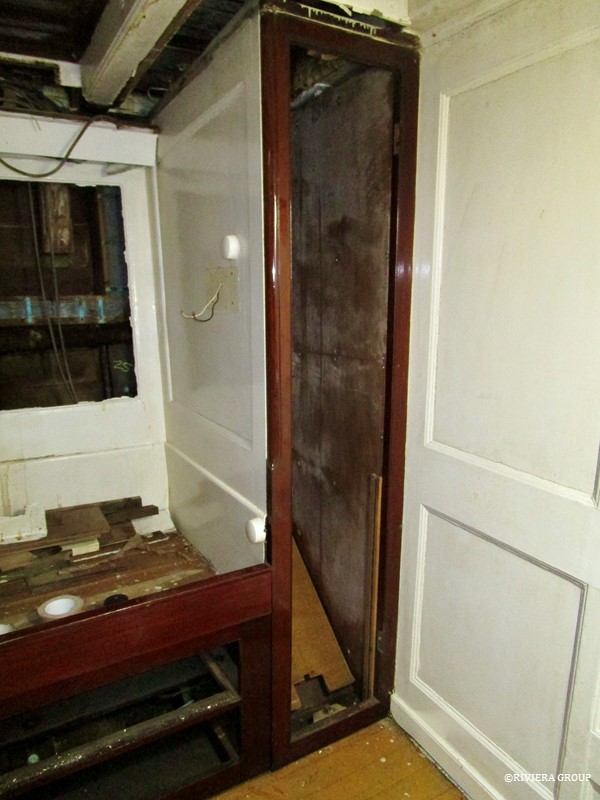
Earlier in the month, all the removable parts like locker doors, shelves and drawers (above) were removed, labeled and stored for later restoration.
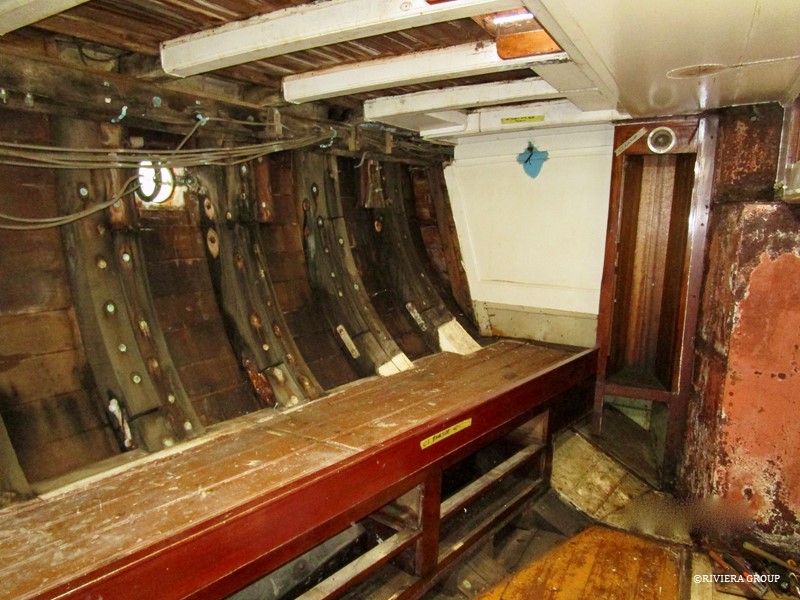
In the aft starboard cabin (above) the paneling was removed to get a better view of the hull interior. In this configuration, the bunk was long enough to sleep two. On the left is the riveted steel engine room bulkhead.
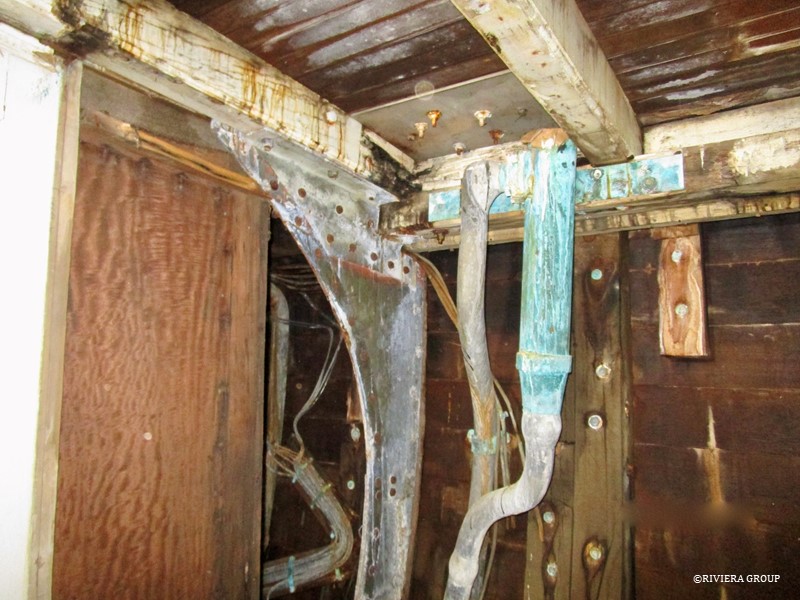
This bilge pump is original, and was still intact though unused, probably since electric pumps became available. It was operated by hand from the deck, using a leather plunger inside a copper tube to draw water out of the bilge and discharge it from the hull. There were two of these on Cynara. Also visible is the top of one of the two steel web frames that span the ship from port to starboard.
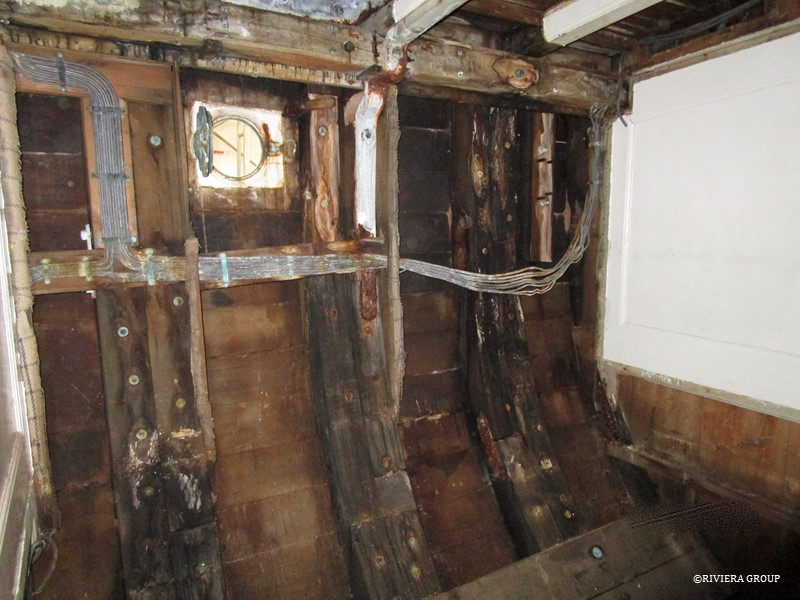
It was interesting to compare the carefully routed wiring from the original build (above) with the wiring that had been added in later refits (below).
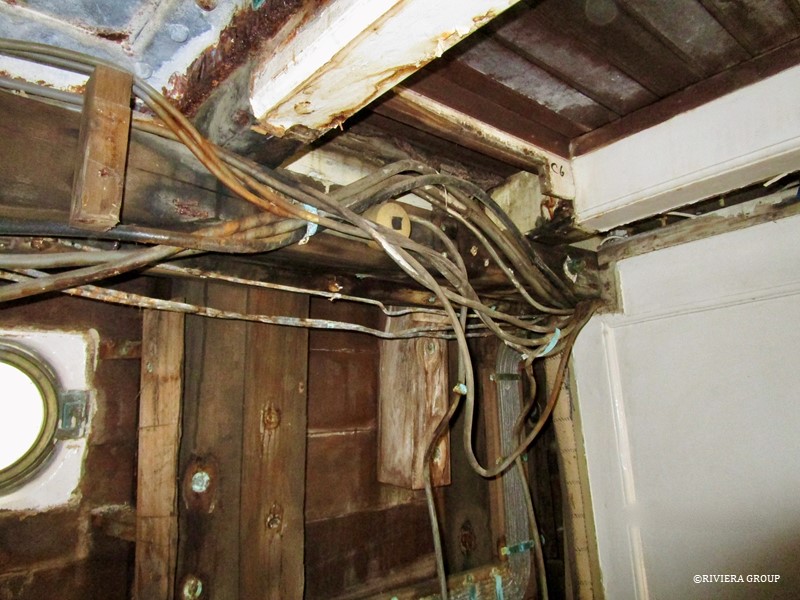
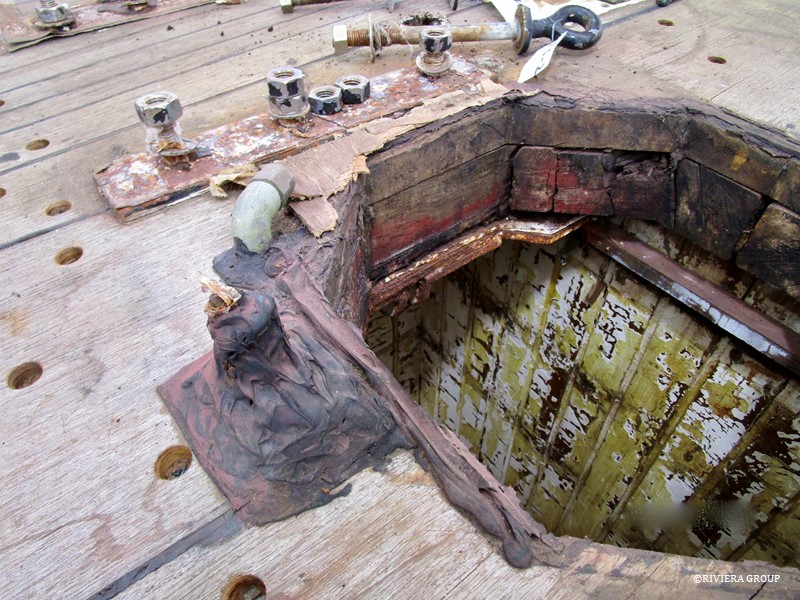
The main mast hole was obviously in need of serious work.
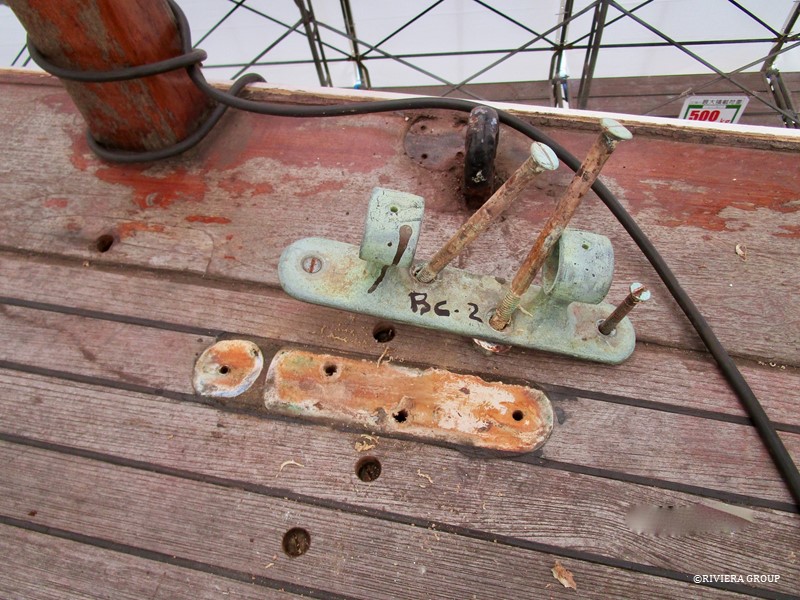
The deck cleats are being labelled, catalogued and stored. They are original bronze cleats and will be restored as well as used to cast extras.
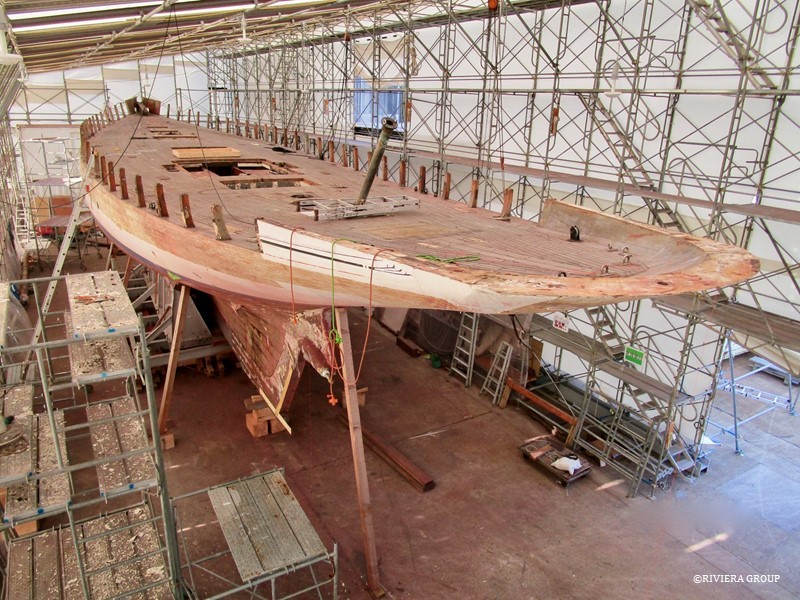
By the end of the month, the deck had been cleared, and areas of the hull had been scraped of paint. The bronze steering gear and quadrant has been removed and the rudder tube is being teased from its position by pulling it up through the deck (above). It was particularly stubborn and required considerable force to get it moving after so many years in place, but it had to come out.

